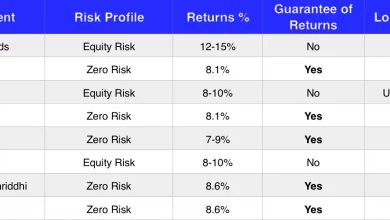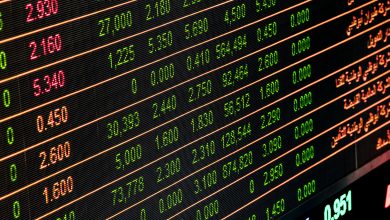Are We on the Verge of a New Commodity Super-Cycle?

Commodity super-cycles – long-term periods in which such assets like commodities (copper, oil, gas) are in high demand due to various economical factors. Some market analysts have predicted that the new commodity super-cycle will start sooner or later due to the weakening of the world’s leading currencies, increasing infrastructure spendings, and renewable energy.
What did the last supercycle bring us?
While commodity super-cycles last, we usually witness a rapid growth of the countries whose economies mostly rely on supplies instead of technologies and solutions. For that reason, the world’s biggest commodity-relying economies collided with the union called BRIC. BRIC includes Brazil, Russia, India, and China, which represents about half of the world’s population. Countries in the union were only starting the path of rapid industrialization, which requires a large supply of raw commodities like oil, gas, wood, etc. The previous cycle has lasted for more than 10 years which allowed the above-mentioned countries to grow massively.
The slowing of the previous cycle has taken place from 2008 to 2011 when the great financial crisis hit the markets. Once economies cooled off a little and started growing back, we witnessed the shift in the demand on the markets from traditional and safely growing commodities to risky assets like stocks.
Why do we think that the new Supercycle is around the corner?
While the last super-cycle lasted, the growing economies received nothing but benefits from it and continuously used supply to sell their commodities for increased market prices. But at the same time, countries like the U.S. have experienced a major drop in the value of their currency. We could track a clear correlation between copper and oil prices and the dollar that has been at the lows once oil hit the ATH.
As we can see, the U.S. dollar has been showing early signs of weakening since April of last year. According to the DXY, the dollar has lost more than 10% of its value, and the reason for it is the ZIPR or Zero-Interest Rate Policy. Bearish tendencies on the U.S. dollar often fuel the price increase for commodities and raw materials. Since the currency is losing its value, the producer of those commodities has no other choice but to increase the price of the asset without cutting the supply.
Another signal of an upcoming supercycle is the elevated inflation rates that were non-existent only a couple of years ago in the U.S. Quantitative easing and zero-interest-rate have led to the huge growth of the stock market but at the same time have increased the inflation rate of the dollar. Usually, to prevent increased inflation rates, central banks increase their key rates which slows down the devaluation of the currency.
Once COVID-19 hit the markets and the world in general, we’ve seen a unique case of almost non-existent demand for raw materials like oil, copper, and gas. As for now, the developing economies, commodity prices, and supply have already got back to the post-pandemic levels and it seems like the absence of the demand has fueled an upcoming commodity market increase.
What commodities will benefit the most from another super-cycle?
Even though the previous cycles have shown us how oil can benefit from the elevated market demand, the next super-cycle won’t be a copy of the previous one. We expect a whole new market for metals that are being used in high-performance batteries. Cobalt, lithium, and nickel are most likely to become the main drivers of the new supercycle. In addition to that, more traditional options like copper will be, of course, in demand due to global electrification.
Oil markets are most likely to retain their growth rates due to the absence of new projects and solutions. Companies have slashed their exploration budgets due to the inefficiency of such activities. But it’s not as bad as you might think. Thanks to the OPEC agreement, oil mining and supply are now being under control to increase demand on the market. Another commodity aside from copper that has a lot of potentials is a natural gas that can be used as renewable energy. Currently, coal plants are being progressively removed by the governments for the sake of ecology and environmental saving.
What are the similarities between old and new supercycles?
Even though previously commodity bulls have anticipated the rapid increase in the economy of the emerging markets, now they expect a “surprising” growth of the already developed countries like the U.S. due to the changes in economical and environmental policies.
But the old supercycles “players” are still going to largely benefit since the main driver of the previous cycle – China – is being one of the most attractive investment offers on the market with its steady GDP growth from 3.6% to 16.3% according to World Bank.
In addition to the economy, let’s not forget the geopolitics that has the same if not the greater impact on supply and commodity prices. At the beginning of the previous cycle, China had only joined WTO which was a large step towards the globalization of the economy, which partially fueled demand for commodities. Today, economies are more collided with each other and working more willingly compared to the last cycle.
Last but not least – total electrification and decarbonization trends are something that we should follow while the new commodity supercycle lasts. Lower carbon intensity will most likely affect the market trends directly. Demand for fossil fuels will decrease one day or another – they won’t be needed in the new age of total electrification. But let’s not forget that not all regions are developed and there are still some countries out there that most likely need fuels like oil for progressively increasing industrialization. Southeast Asian and African markets are most likely to become the biggest importers of cheap and yet useful fuels.
How are the stock market and retail investors going to react?
There are two states of the market in general, which are the risk-on and risk-off. While the risk-on prevails on the market, retail investors and traders are looking for investment in more volatile assets like stocks. In addition to that, people start spending more money on expensive goods instead of investing in any funds. Once risk-on turns into risk-off for any reason, investors try to reserve funds that they’ve received in the risk-on markets and start investing in less volatile products like gold and currencies.
Even though products like oil are considered commodities, it’s not always a “safe haven” asset for investors. Oil is more likely to grow in the risk-on markets since the demand for it is higher. Once the market turns risk-off, commodities like precious metals receive more demand and funding from investors.
Traders and investors have already reacted to the upcoming trends and have started to invest more in commodities like oil, copper, nickel, and gas, but at the same time, the stock market hasn’t yet stopped growing. In this super-cycle, we might witness unique market conditions in which both risk-on and risk-off financial assets are going to perform equally well.
Conclusion
Super-cycles are long-term processes that don’t immediately reflect the current market conditions. Sometimes, supply responses after years of being under the commodity cycles. In this case, copper and other metals are most likely to start performing only after a few years. Once “green” initiatives are released and implemented in the current infrastructure of major cities, demand will most likely increase exponentially. Most of the copper investment projects haven’t been approved and they will take years to come to become fully operational.
Every super-cycle differs from another and the upcoming one will probably bring us even more surprises that we are not ready for. We are going to look forward to a progressive but not strong value increase in the oil (thanks to OPEC and developing continents) and a rapid demand increase on metals that are going to be used in the production of high-performance batteries.




